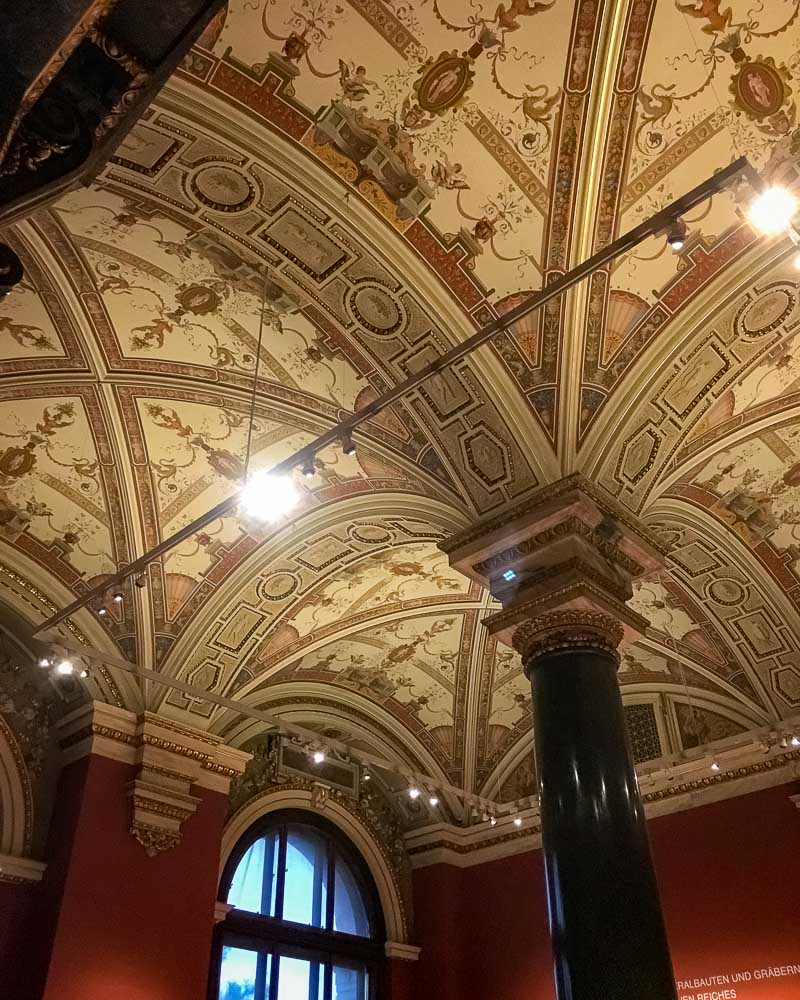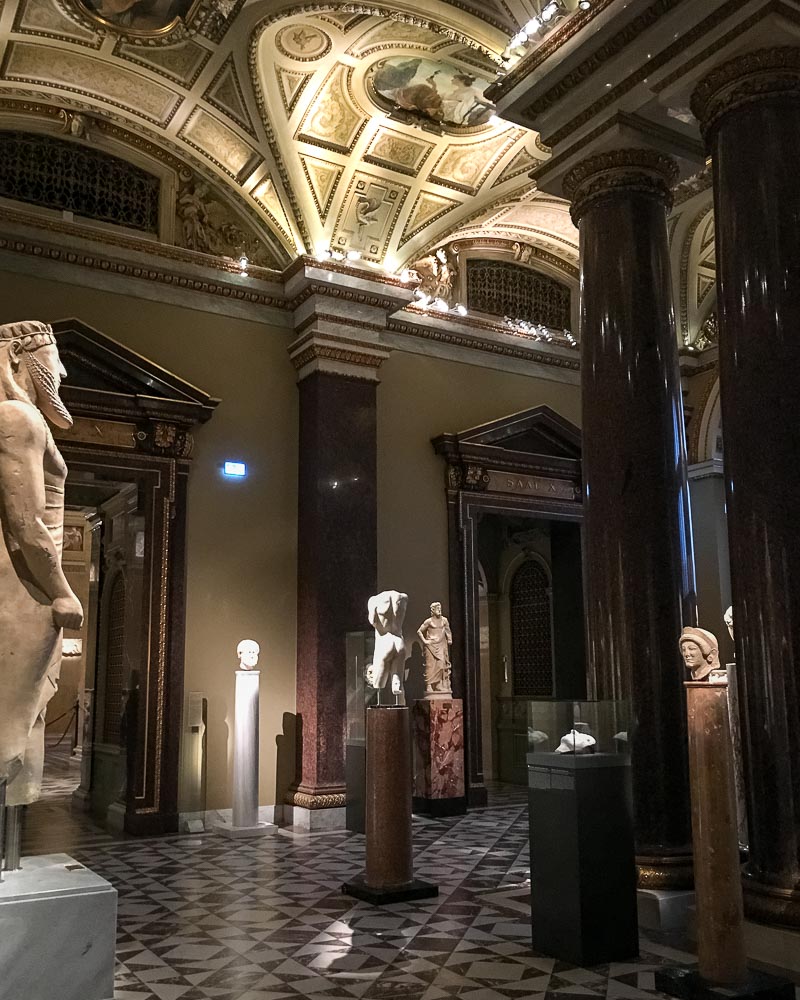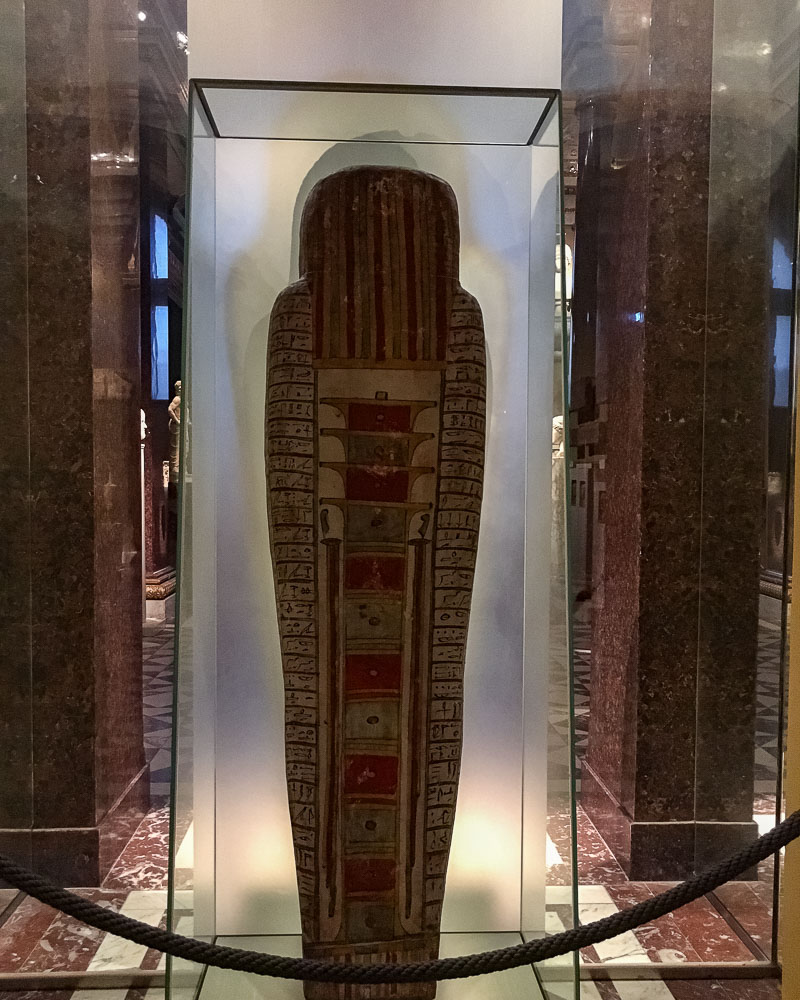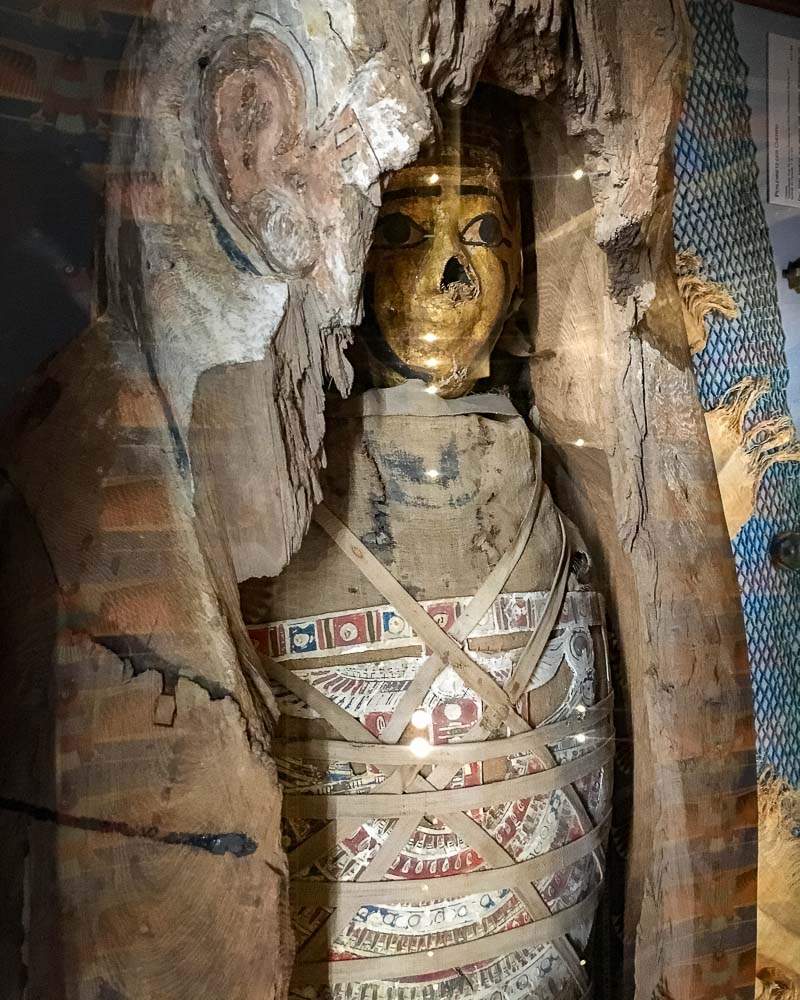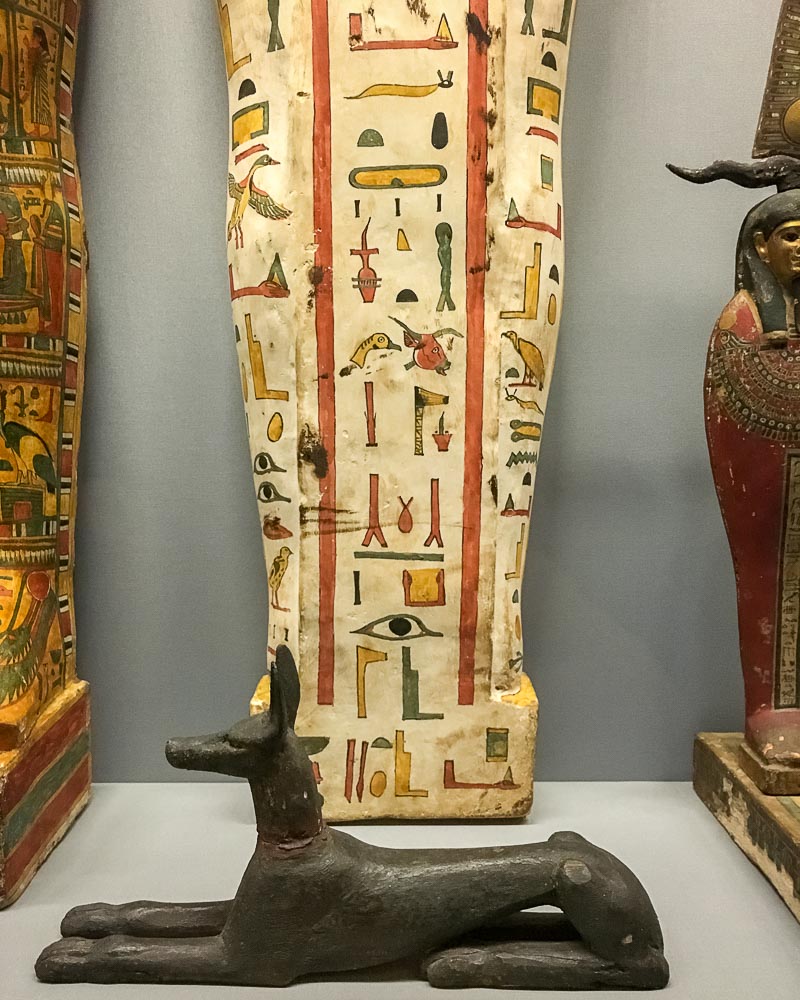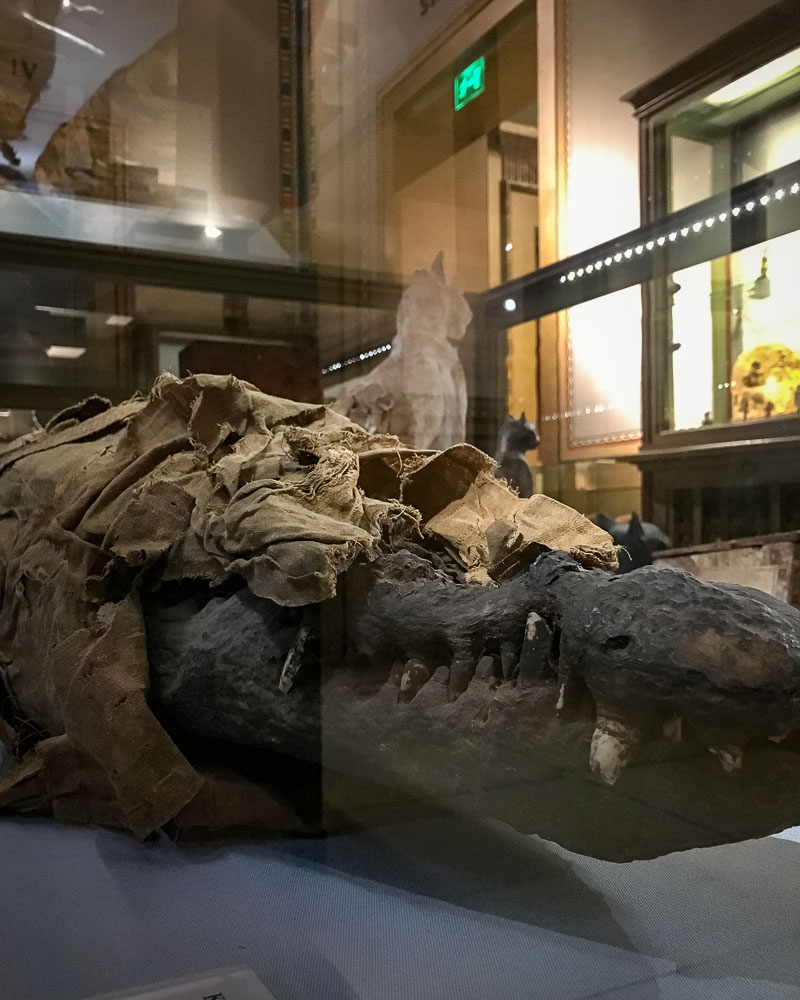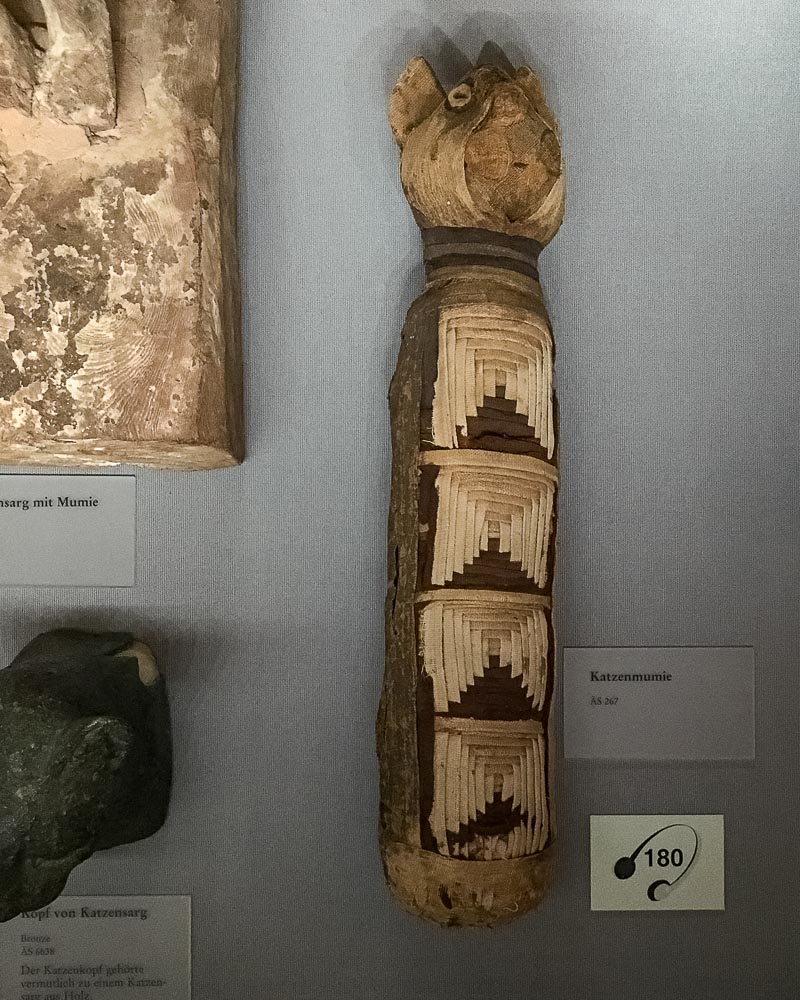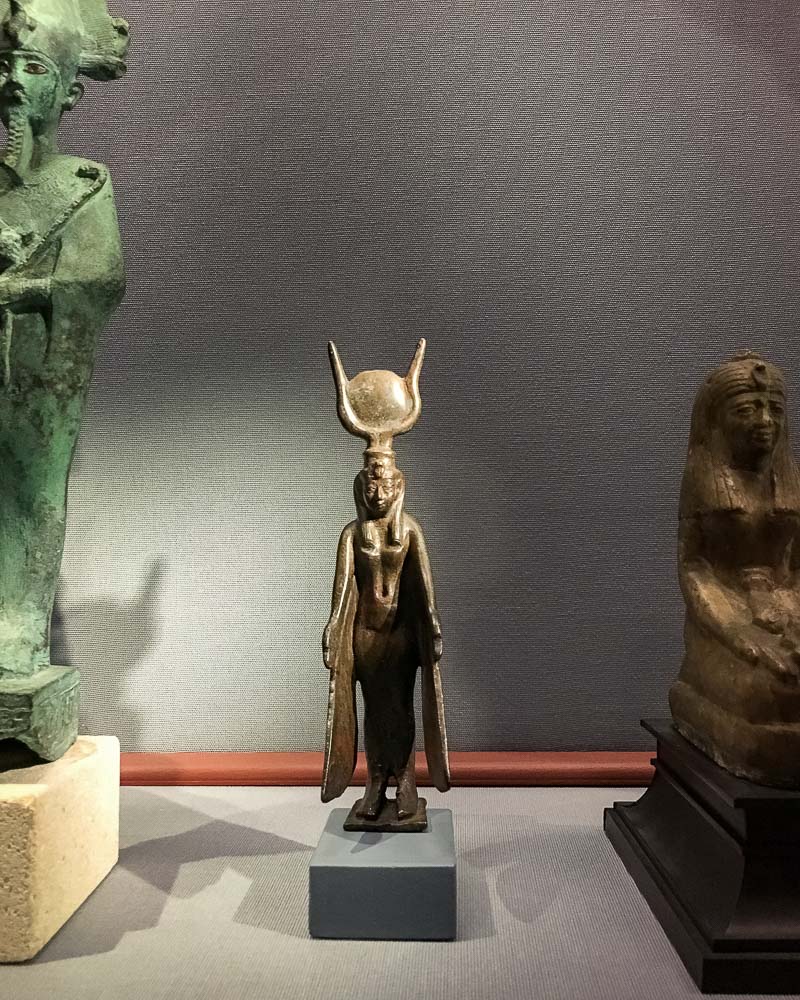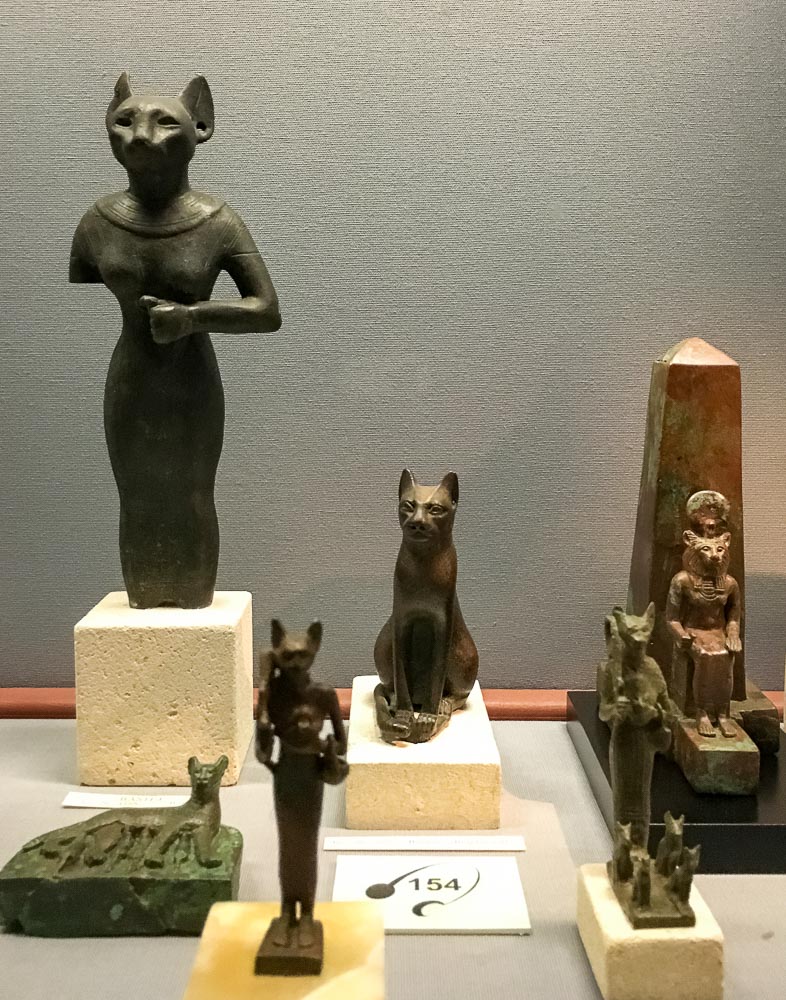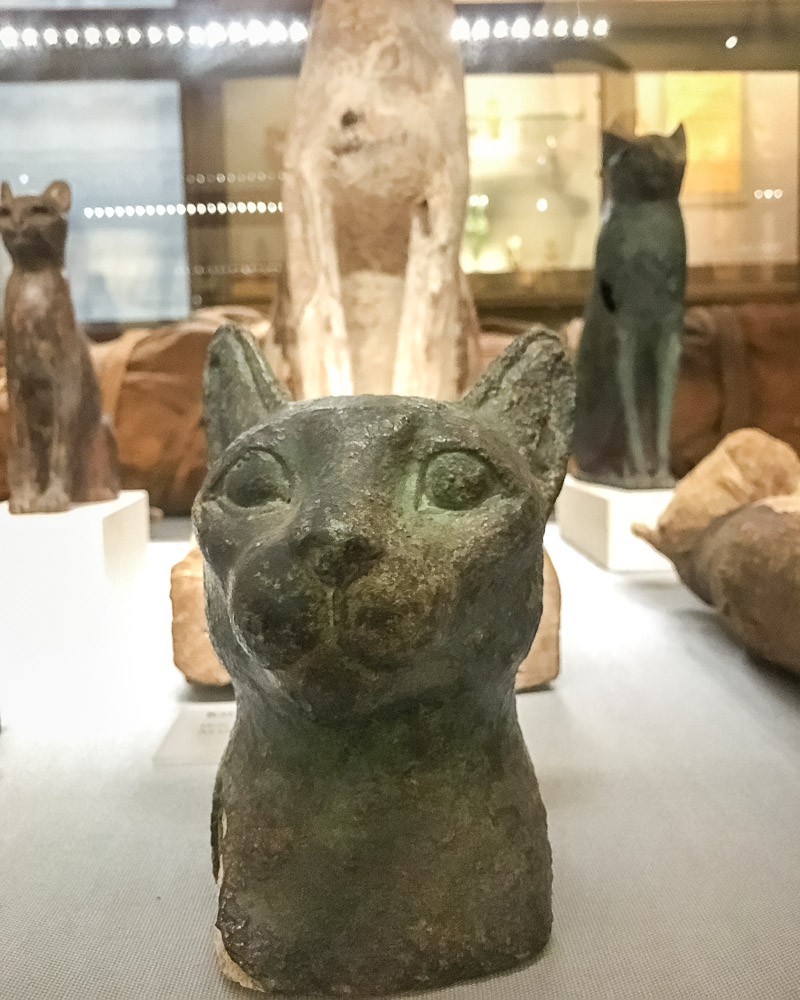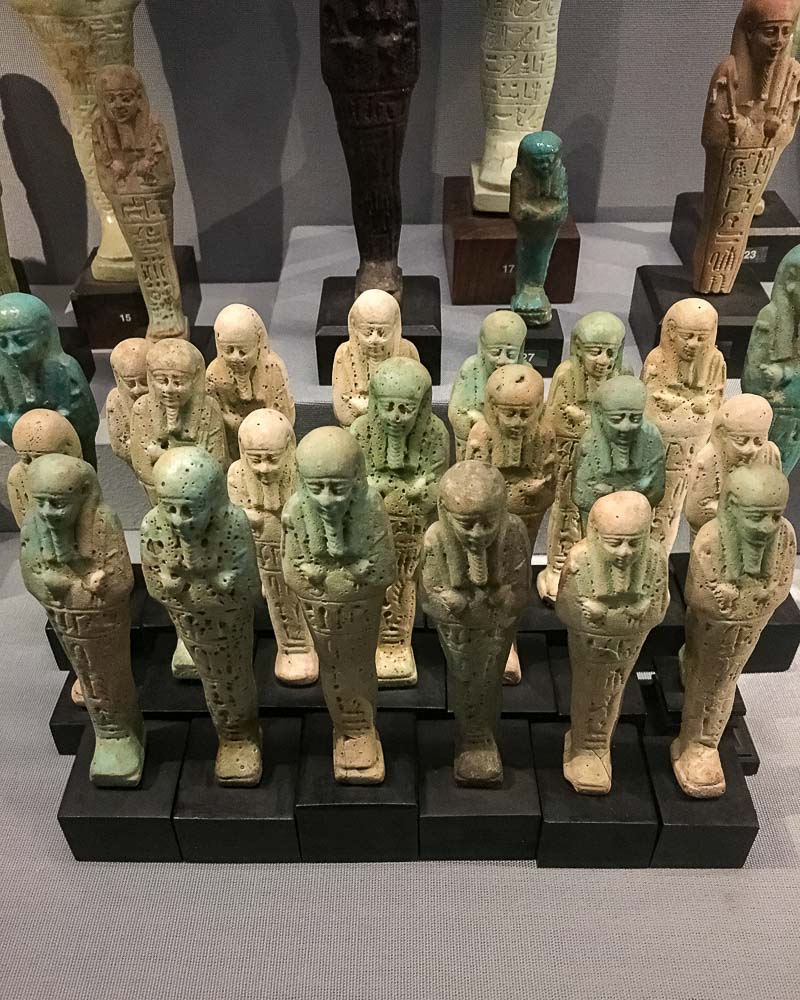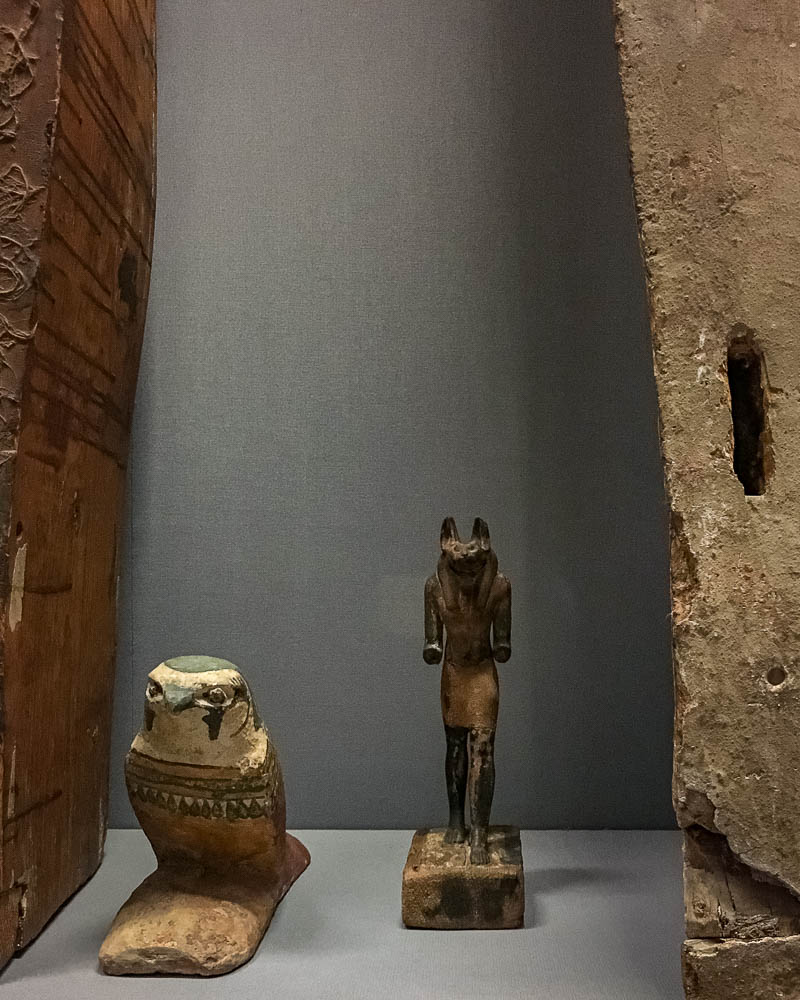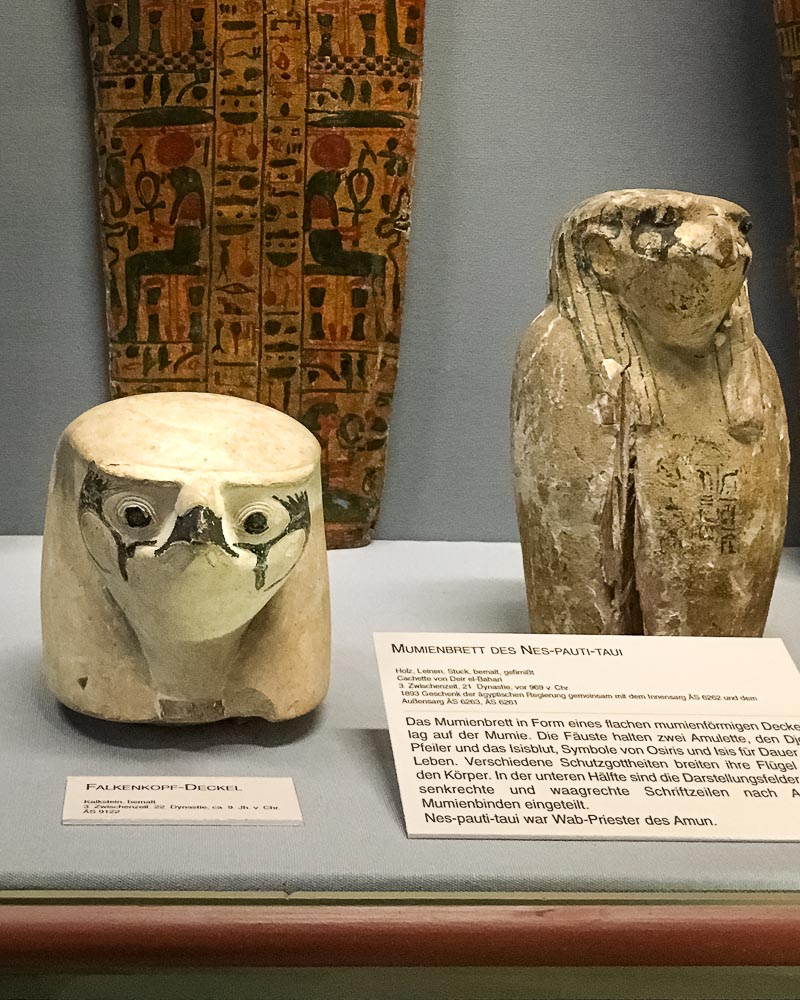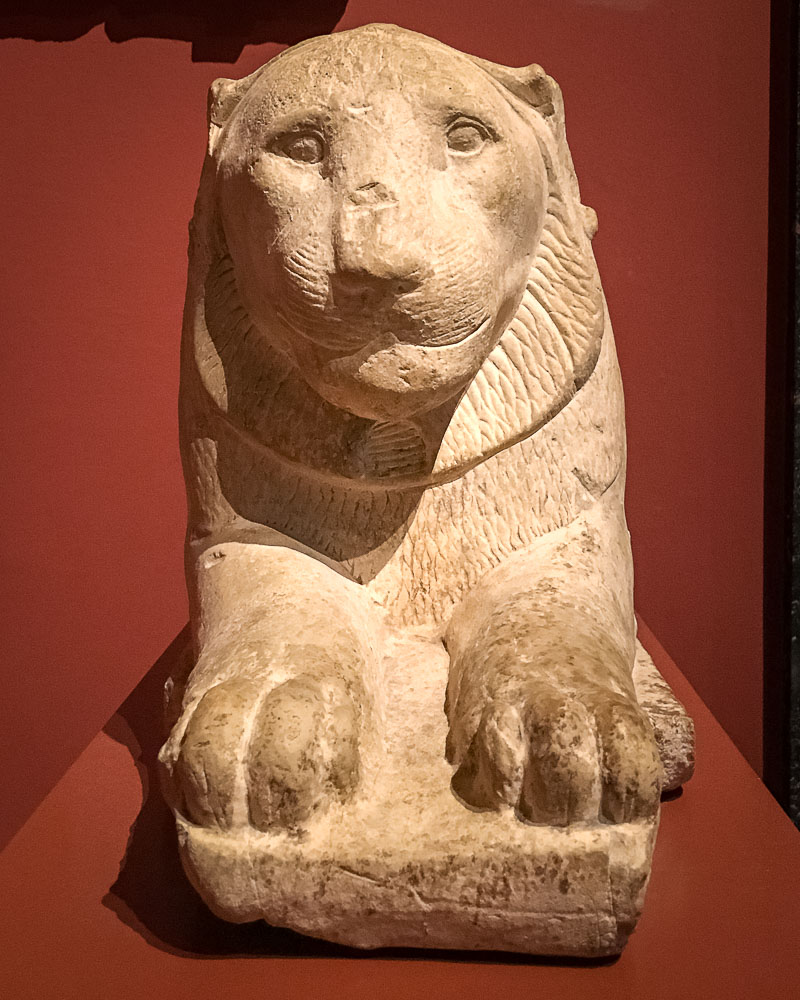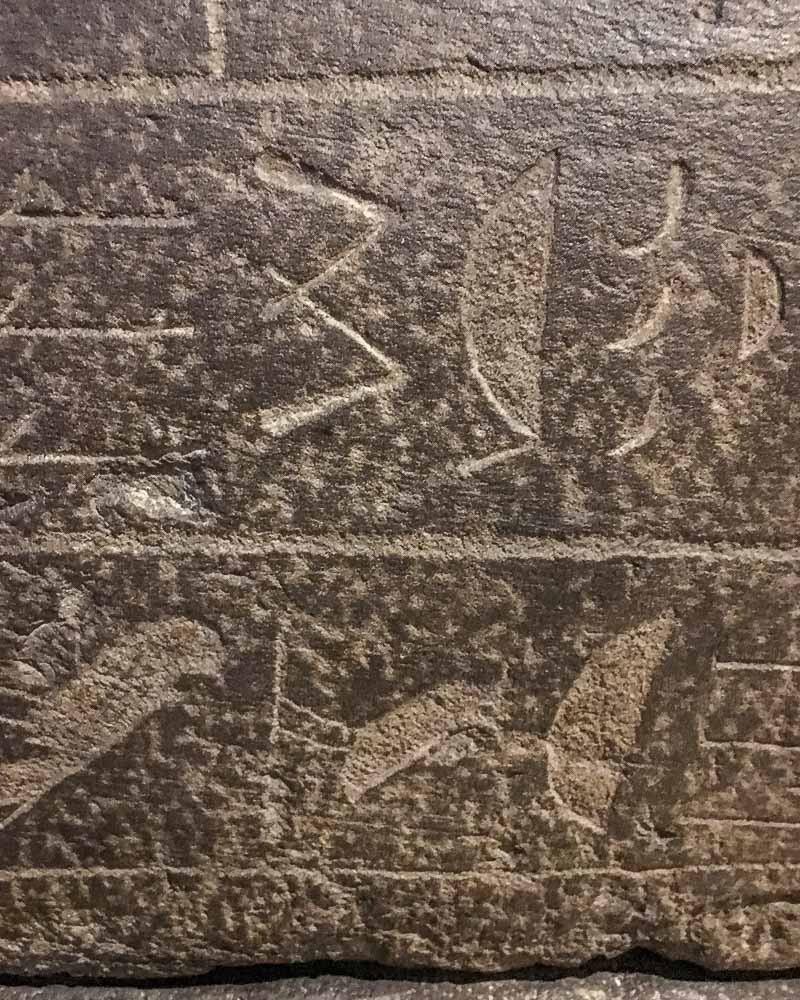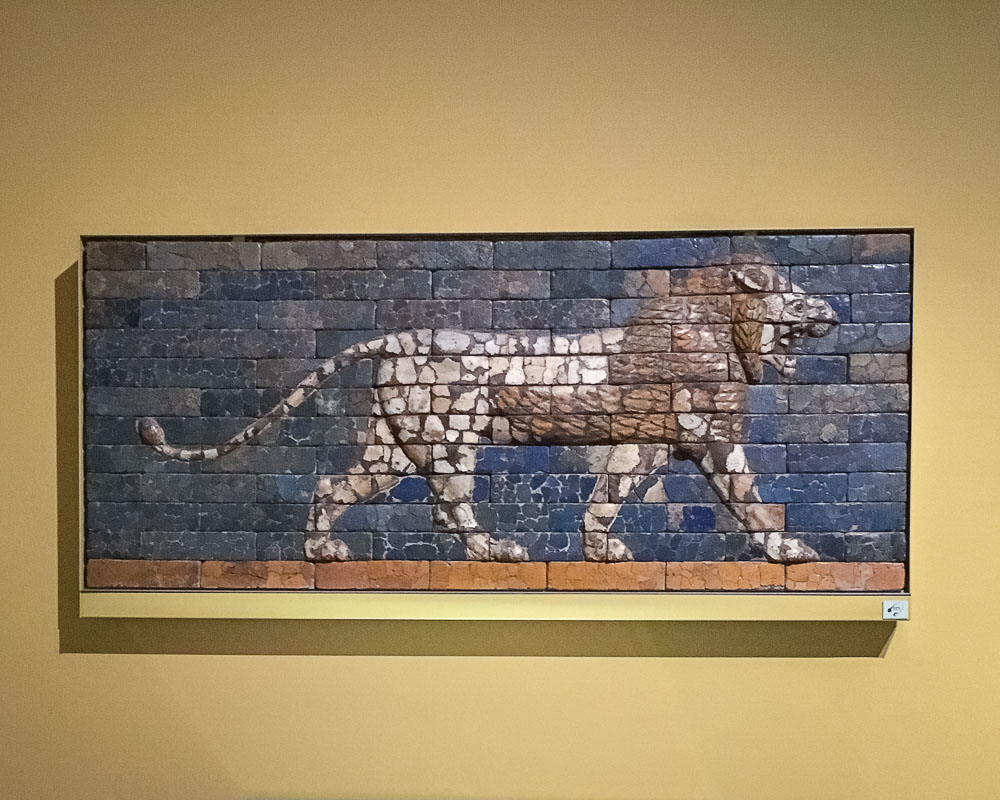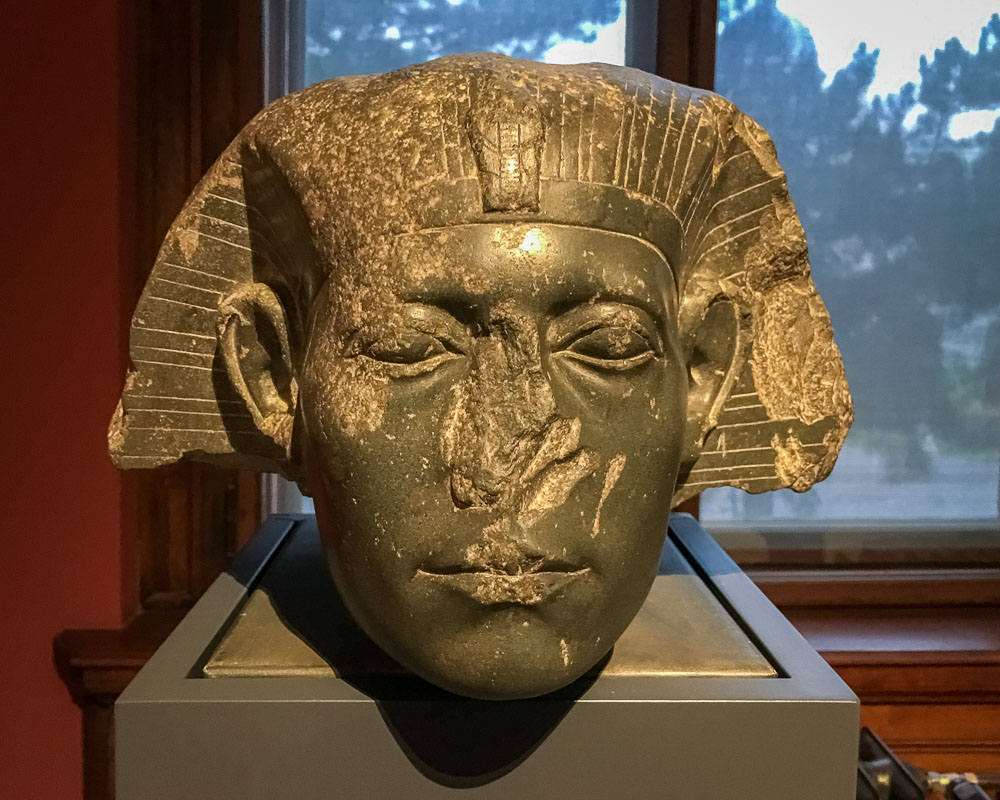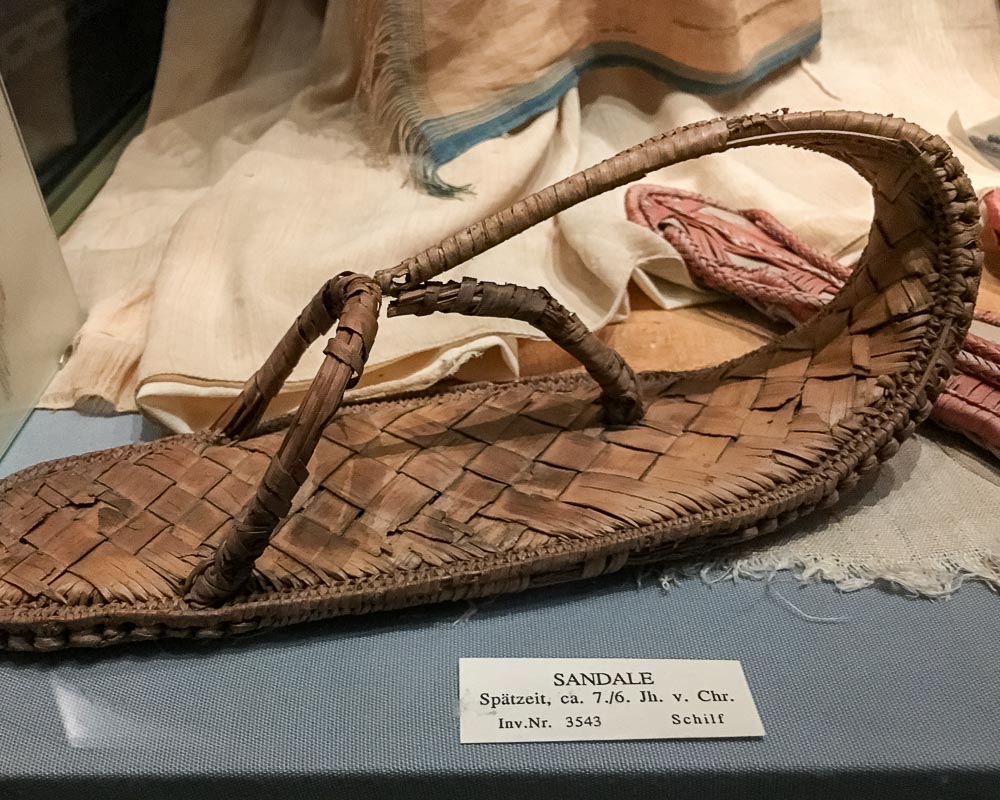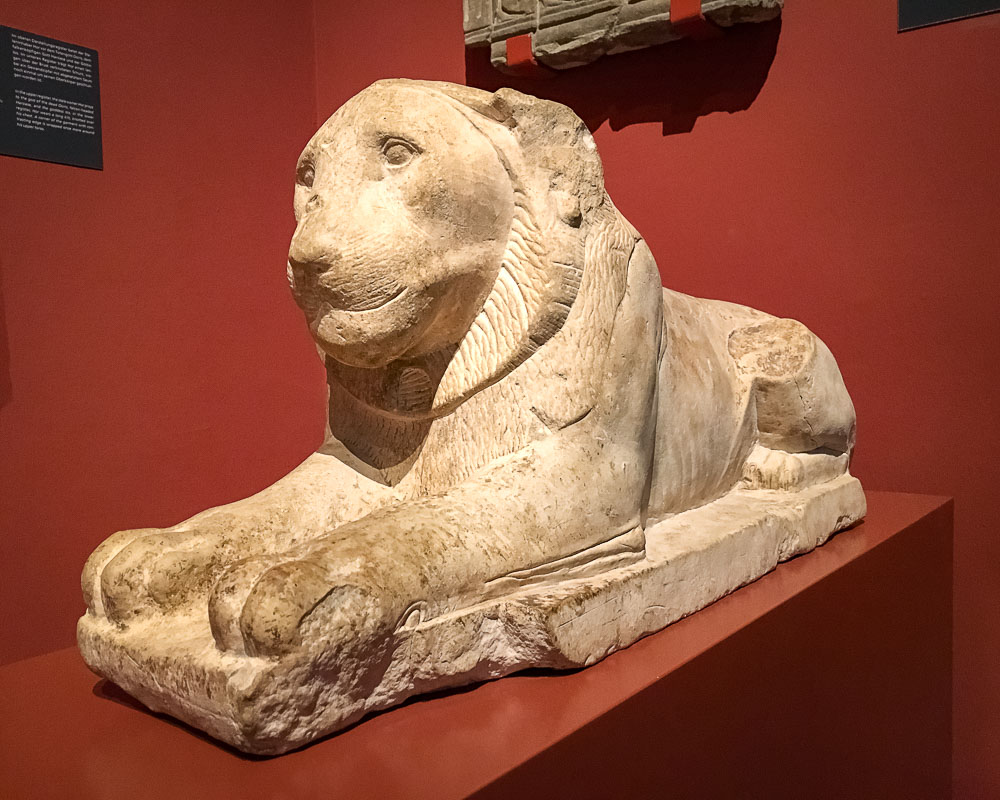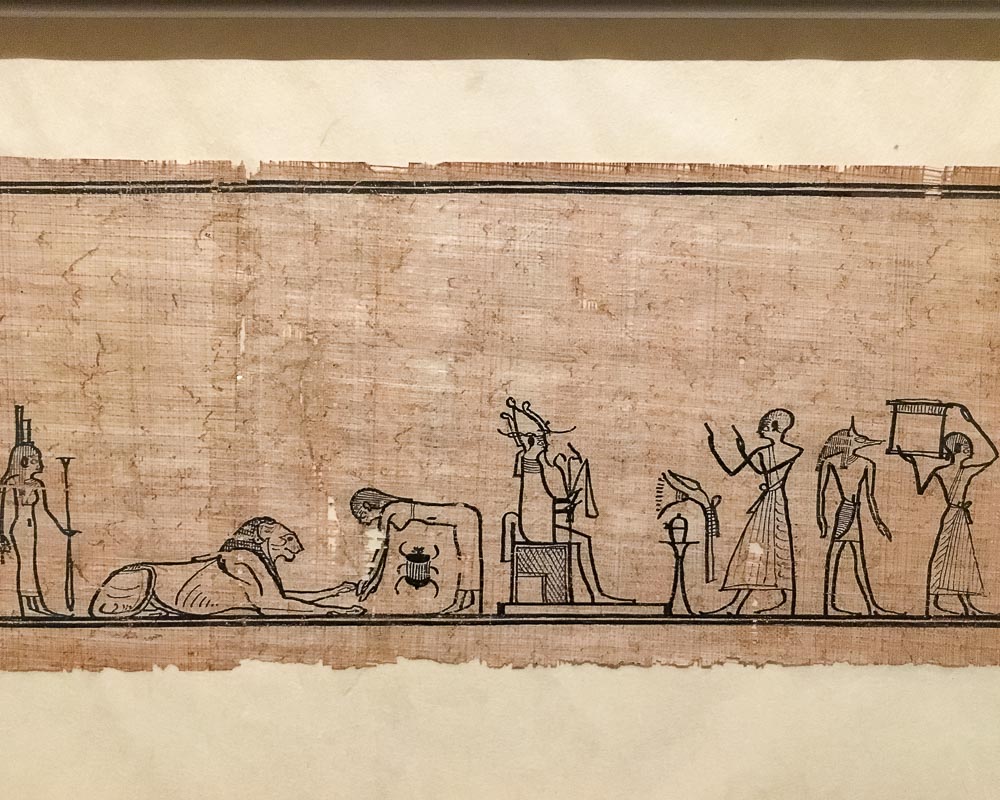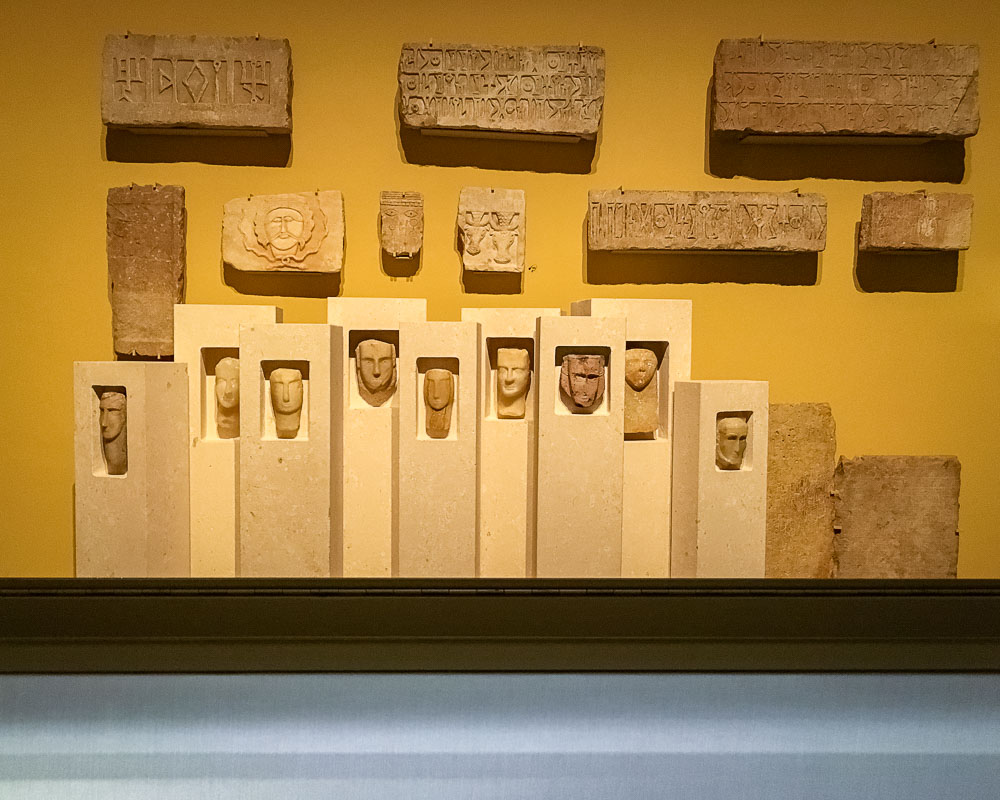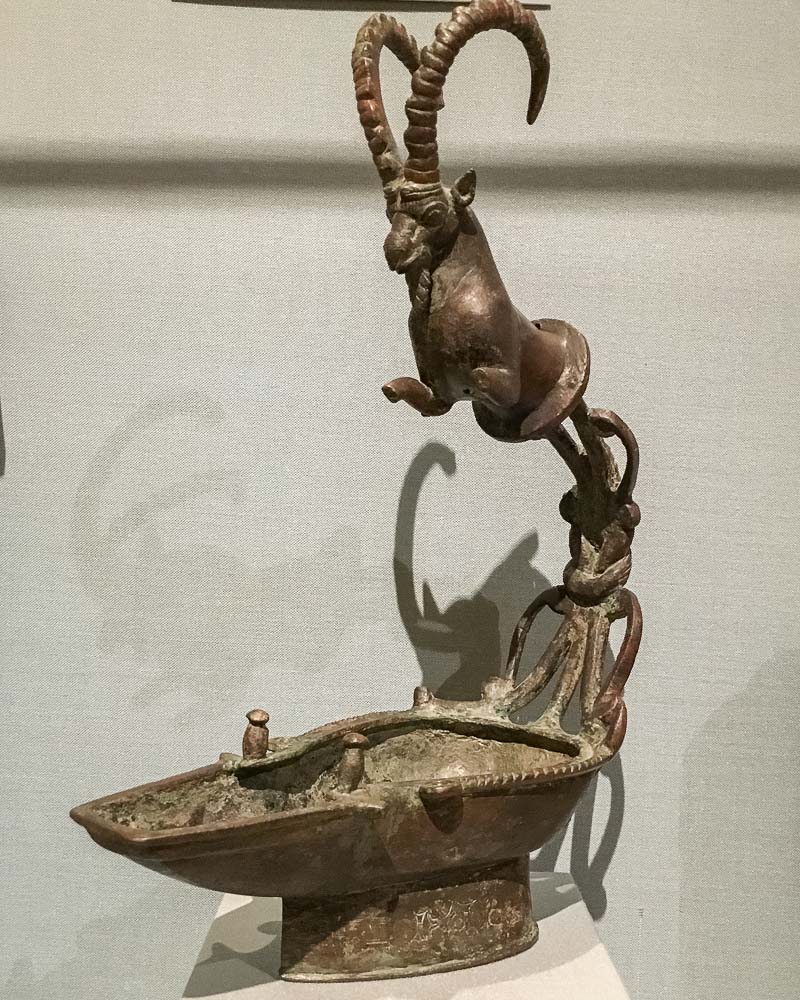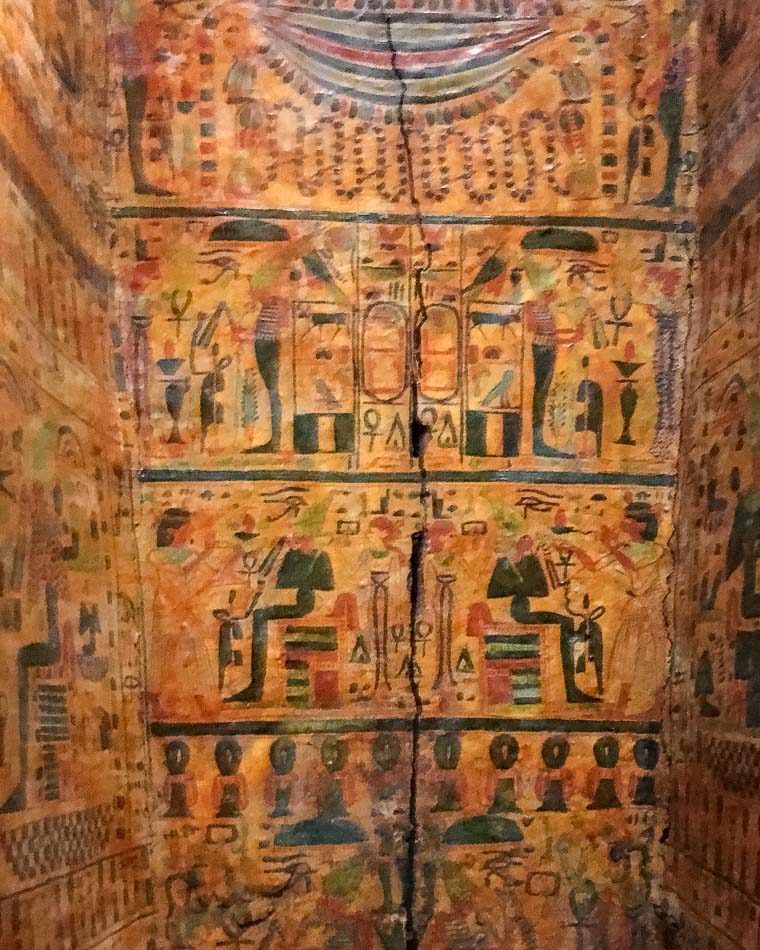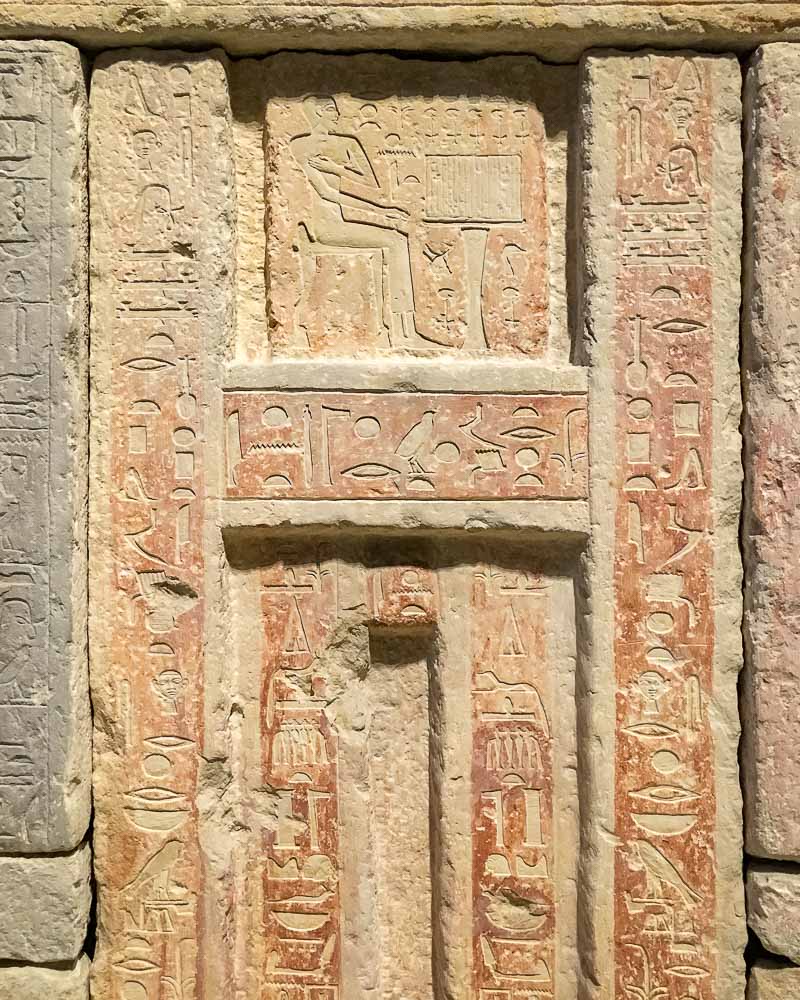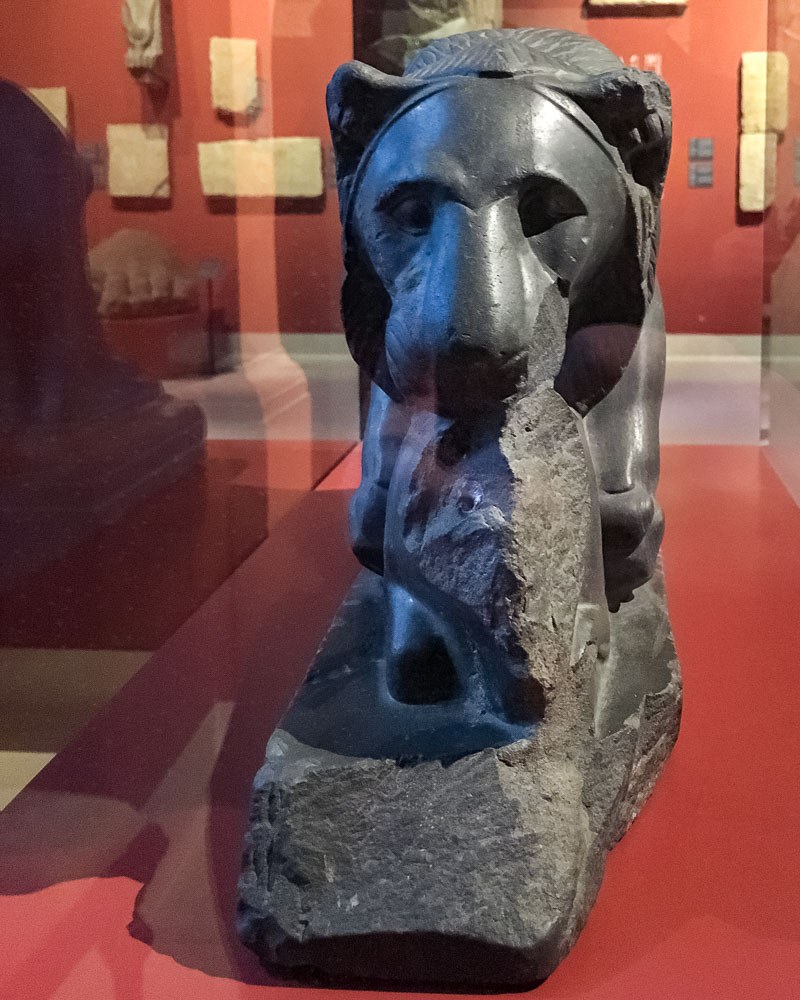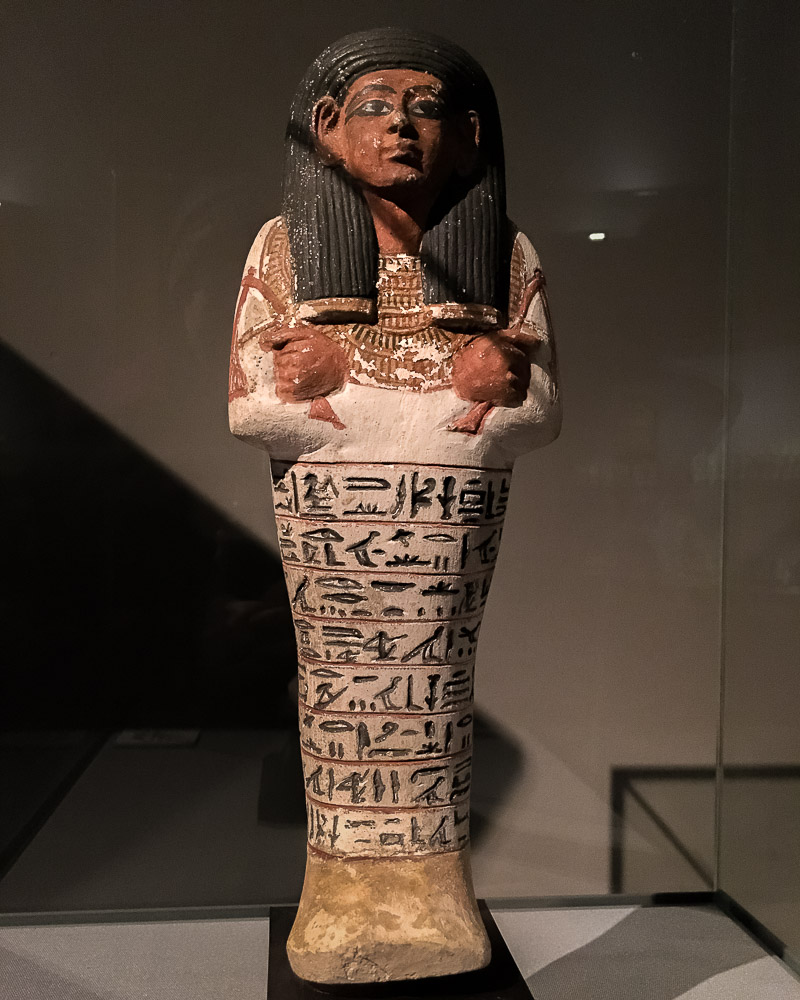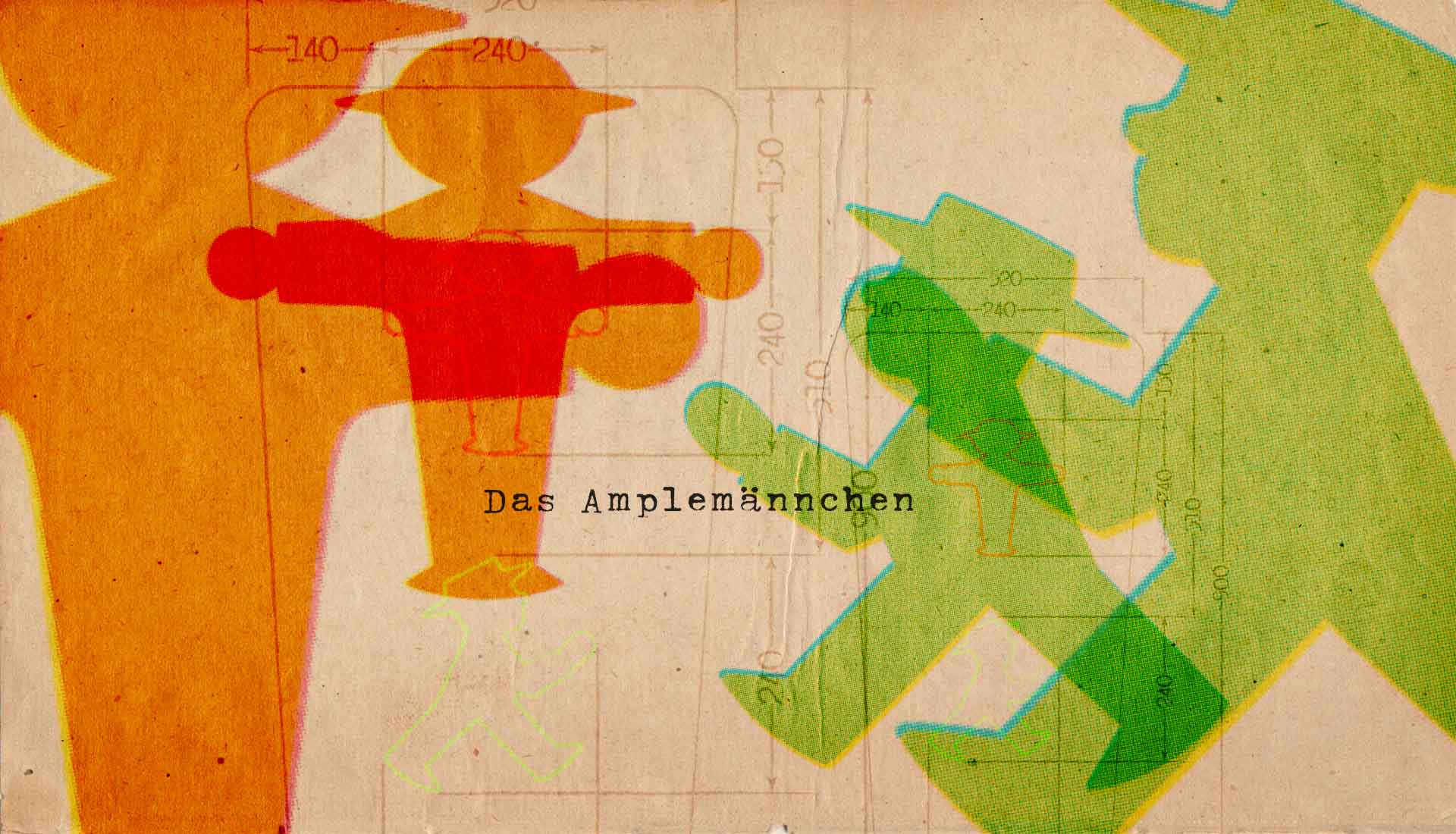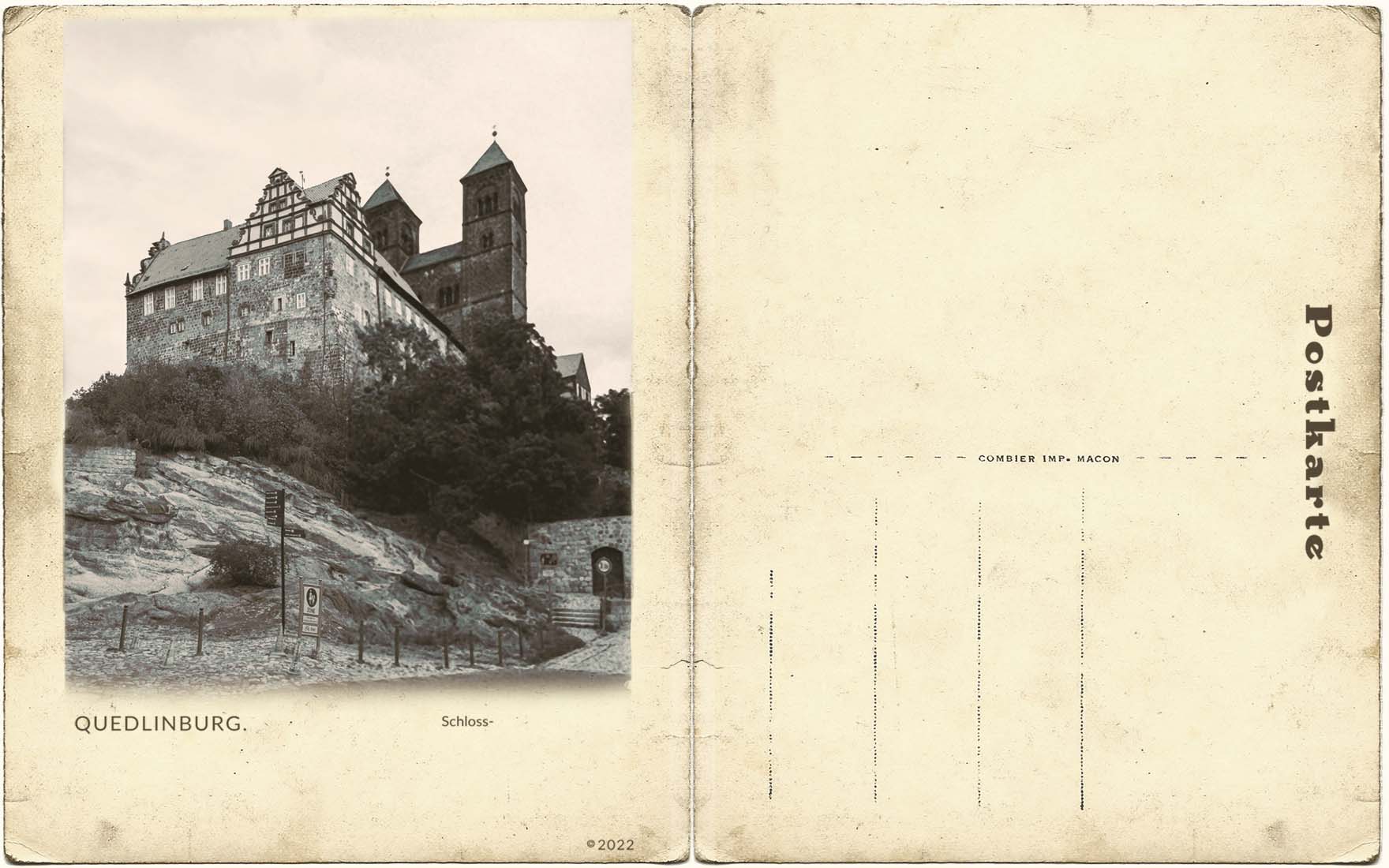he Egyptian and Near Eastern Collection has more than 17,000 objects spanning a period of almost four thousand years. The collection is structured in four sections: funerary cult, cultural history, sculpture and relief, and the development of writing. The rooms of the Egyptian and Near Eastern Collection are magnificently decorated and this Egyptianesque design was part of the original plan of the architects. The use of three original Egyptian monolithic columns instead of the marble pillars used to support the ceilings of the other halls was unique. The columns, which had been excavated in Alexandria, were a gift to the emperor in 1869.
The absolute age of these objects is quite awe inspiring to me…to think of all the lives that have come and gone during the ages. Did you know that sarcophagi are brightly colored? The burial chambers are full of all sorts of mummified animals to assist the person in the afterlife…baby alligators – and an adult one – cats, birds…the list goes on.
From the Ishtar Gate in Babylon, a long processional road led to the temple in the center of the city. The access road was flanked by thick walls, reinforced at regular intervals by projecting towers. The Ishtar Gate was decorated with friezes of fired and glazed bricks depicting dragons and bulls. The towers of the access road were decorated with representations of lions, the symbol of the goddess Ishtar. 604-562 BC.
The likenesses of Senwosret III show unmistakable individuality. His features suggesting determination reflect the goals of his power politics. The way the nemes head-cloth projects backwards and details of the break show that the head belonged to a sphinx with its leonine body. In Egypt, sphinxes were a very popular type of royal statuary. 12th Dynasty, reign of Senwosret III, ca. 1878-1843 BC;
An oil lamp decorated with a leaping ibex has lost its cover sometime in the intervening 1,800 years. The ibex was considered a symbol of the moon god and is an important motif in ancient South Arabian iconography.
A priest coffin from 969 B.C. is beautifully decorated with a broad collar of leaves and flowers and religious motifs that dominate the decoration of the coffin – the numerous representations of deities bestowed magical protection on the mummy.
The monument (1314-1304 B.C.) is typical of a type developed in the New Kingdom. An inscription surrounds the main decorated surface where the owner, presenting offering to deities, is shown with his family. The text includes prayers as well as the names and titles of the persons depicted.
The false door from 2,200 B.C.was an imaginary gateway at the worship place of the tomb linking the world of the living and the after-life. The soul of the deceased passed symbolically through it to partake of the offerings. The central motif of the decoration is the panel set into the false door bearing a scene of the tomb owner seated at table.
A statue of a lion devouring a steer, which presumably stood in the sanctuary of a lion temple. In contrast to the standard Egyptian depiction of a recumbent lion – here, the beast has caught his prey and sunk his teeth into its neck.
A sitting cat found at the the main worship place of the cat goddess Bastet in the Nile Delta. Here was found a large cat cemetery – feline mummies and figurines made of bronze were often donated as offerings to Bastet. The pierced ears were originally decorated with earrings.
Isis, the wife of the god Osiris, is often depicted as a mother deity with her son Horus on her lap. Over her wig she has the vulture hood, on her head she wears the sun disk between two cow horns.
This Uschebti from 1,300 B.C., who is supposed to perform mainly field work in the afterlife on behalf of the dead, bears the name of the necropolis worker Sen-nedjem. This worker, like numerous others, lived in the settlement were responsible for the construction of the royal tombs in the Valley of the Kings. Since this made them secret keepers, they lived with their families secluded from the rest of the population.
As I move through the rooms, I am also moving through the ages…and I can see the evolution of the artistic style. Slowly, I transition into the Greek and Roman artifacts.



